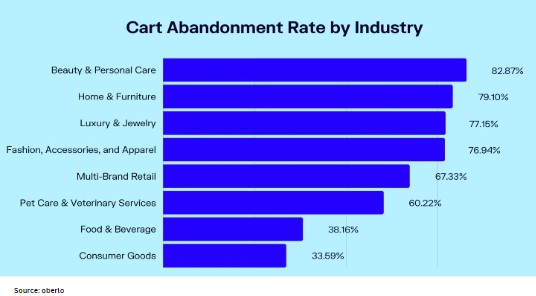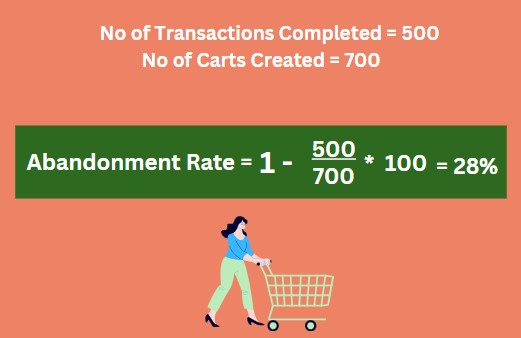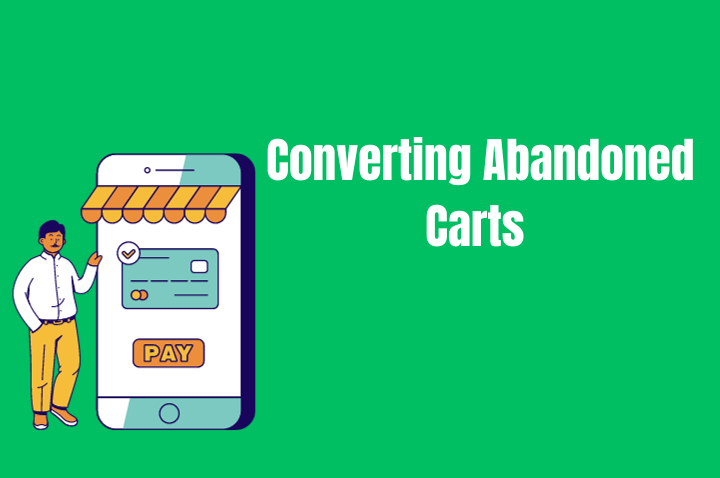In the world of online shopping, abandoned carts are like missed opportunities. Imagine this: people visit your online store, pick items they like, and put them in their cart but leave before completing the purchase. But don’t worry! There are smart and easy ways to change this. In this guide, we’ll show you simple tricks to convince these shoppers to buy, boosting your online store’s sales. With these tips, you’ll turn abandoned carts into happy customers and make your online business thrive. Let’s get started!

Most Common Reasons for Shopping Cart Abandonment
Shopping cart abandonment is a continuous challenge for e-commerce businesses. Understanding the most common reasons behind it is crucial to address these issues and boost conversion rates.
-
Mandatory Account Creation:
Requiring customers to create an account before making a purchase can be a major deterrent. Many shoppers prefer a quick and anonymous checkout process. To reduce cart abandonment, consider offering a guest checkout option, allowing customers to buy without the hassle of account creation.
-
Long or Confusing Checkout Process:
A lengthy or confusing checkout process can frustrate customers. Streamline the steps, eliminate unnecessary fields, and provide clear guidance to make it as smooth as possible. The goal is to make buying from your website a hassle-free experience.
-
No Discounts or Promo Codes:
Shoppers often seek deals and discounts. If they can’t find any on your site, they may abandon their carts in search of better offers. Consider running promotions or loyalty programs to entice customers to complete their purchases.
-
Unexpected Shipping Costs:
Surprise shipping costs at the last stage of checkout can lead to cart abandonment. Be transparent about shipping fees upfront, offering options like free shipping thresholds or flat-rate fees.
-
Longer than Expected Delivery Times:
If your delivery times are longer than customers anticipate, they may look for quicker alternatives. Clearly communicate estimated delivery times, and if possible, offer expedited shipping options.
-
Ambiguous Return and Refund Policy:
A clear and customer-friendly return and refund policy builds trust. Ensure your policy is easy to find and understand, providing shoppers with confidence in their purchase.
-
Lack of Desirable Payment Options:
Customers have varying payment preferences. Offering a range of payment methods, from credit cards to digital wallets, caters to different needs and can prevent cart abandonment due to payment limitations.
-
Payment Security Concerns:
Customers are cautious about online security. Display trust symbols, ensure secure payment gateways, and communicate your commitment to data security to ease these concerns.
-
Restrictions on Product Quantity:
Some customers may want to buy in bulk. Implement flexible quantity options and notify customers if certain products have purchasing limits.
-
Comparison Shopping:
Online shoppers often compare prices and options across multiple websites. To combat this, focus on competitive pricing and highlighting unique selling points to keep customers engaged.
-
Site Speed and App Performance Issues:
Slow-loading websites or glitchy apps frustrate users. Regularly optimize your website’s performance, ensuring fast loading times and smooth functionality to provide a seamless shopping experience.
How To Calculate the Shopping Cart Abandonment Rate?
Calculating the shopping cart abandonment rate is a crucial metric for any e-commerce business. It provides valuable insights into how effectively your website is converting potential customers into actual buyers. Here’s a detailed explanation of how to calculate it:
Step 1: Define Your Variables
- Total Transaction Initiated: This represents the total number of shopping carts initiated for purchase by visitors on your website within a specific time frame. You can usually find this data in your e-commerce platform’s analytics or reporting tools.
- Abandoned Carts: These are the carts that were created but left without completing a purchase during the same time frame.
Step 2: Calculate the Abandonment Rate
The abandonment rate is calculated using a straightforward formula:
Abandonment Rate (AR) = 1 – [Total Number of Transaction Initiated (TC) divided by Total Carts Created (AC)] × 100
Step 3: Interpret the Results
The result will be expressed as a percentage. For example, if you had 500 abandoned carts out of 700 total carts created, your abandonment rate would be 28%. This means that a quarter number of the customers who initiated the checkout process didn’t complete their purchase.

Step 4: Analyze and Take Action
Once you have your abandonment rate, it’s essential to delve deeper into the data to understand why customers are leaving their carts. Common reasons include a complex checkout process, unexpected costs, or a lack of payment options. Based on your analysis, you can take actions like streamlining the checkout process, implementing transparent pricing, or offering incentives to encourage customers to complete their purchases.
Ways to Convert Your Abandoned Carts
Converting abandoned carts into successful sales is a critical challenge in the world of e-commerce. Every abandoned cart represents a potential lost sale, but with strategic tactics, you can recover these customers and boost your revenue. Here are some effective ways to convert those abandoned carts into completed transactions:
-
Remind Customers of Their Abandoned Cart
Sending cart recovery emails is an effective way to gently remind customers of the items they left in their carts. These emails often include product images, descriptions, and a direct link to the abandoned cart. By providing a convenient pathway back to their selections, you encourage customers to pick up where they left off and complete their purchase.
-
Retargeting Through Google Ads
Utilizing Ads retargeting campaigns through platforms like Google Ads enables you to re-engage with potential customers who abandoned their carts. By displaying targeted ads featuring abandoned products or similar items, you can remind users of their initial interest and entice them to return and finalize their purchase.
-
Provide Multiple Payment Options at Checkout
Offering a variety of payment methods accommodates different customer preferences and can prevent cart abandonment due to limited payment options. Ensure that the checkout process for each payment method is seamless and secure.
-
Conduct Personal Email Outreach
Personalized email outreach is a powerful tool for re-engaging customers who left items in their carts. Craft emails that address their specific needs and concerns. You can offer assistance, answer questions, and even include incentives like discounts or free shipping to motivate them to complete their order.
-
Use Exit-Intent Pop-ups
Exit-intent pop-ups are strategically timed messages that appear when a user is about to leave your website. These pop-ups can offer discounts, special promotions, or other incentives to capture their attention and persuade them to reconsider their decision to abandon their cart.
-
Show Related Items to Users
Displaying related or recommended products on the cart and checkout pages can pique customers’ interest in additional items. By suggesting complementary or similar products, you can increase the overall value of their purchase and potentially persuade them to proceed to checkout.
-
Excellent Customer Service
Outstanding customer service is a trust-building factor. Make sure your customers can easily reach you through various channels like live chat, email, or phone support. Addressing their questions and concerns promptly can eliminate doubts and increase their confidence in completing the purchase.
-
Provide an Incentive
Incentives such as discounts, gifts, or loyalty points can be powerful motivators. By offering these incentives, especially if they are time-limited, you create a sense of urgency, encouraging customers to finalize their orders to take advantage of the offer.
-
Optimize Your Checkout Process
Streamlining and optimizing your checkout process is vital. Make it user-friendly, mobile-responsive, and efficient, with as few steps as possible. Reduce distractions and minimize friction to ensure a smooth and hassle-free experience for customers.
Conclusion
Concluding, the path from abandoned carts to successful conversions is paved with innovation and customer-centric strategies. By acknowledging the reasons behind cart abandonment and implementing these tailored e-commerce seo solutions, you not only recover potential revenue but also enhance the overall shopping experience. As e-commerce evolves, staying attuned to customer needs and preferences remains paramount. Embracing these conversion tactics ensures that your online store remains competitive, converting those abandoned carts into a thriving business.

